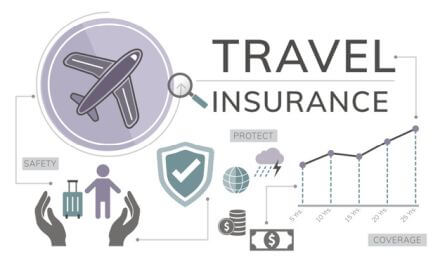Part 1: What is Travel Insurance, What is Covered & Not Covered, How Does Travel Insurance Work
Part 2: Types of Travel Insurance, Where to Buy It, Do You Really Need Travel Insurance
Introduction to Travel Insurance for Kids and Teens
This video explains the concept of travel insurance in a simple, concise way for kids and beginners. It could be used by kids & teens to learn about travel insurance, or used as a money & personal finance resource by parents and teachers as part of a Financial Literacy course or K-12 curriculum.

Suitable for students from grade levels:
- Kindergarten
- Elementary School
- Middle School
- High School
The topics covered are:
- What is travel insurance
- What does my travel insurance cover
- What is not covered by travel insurance
- How does travel insurance work
- What types of travel insurance are there
- Where can you buy travel insurance
- Do you really need travel insurance – is travel insurance still worth it?
What is travel insurance?
Travel insurance is a type of insurance that helps cover financial losses associated with traveling.
It can be used to protect against unforeseen events such as illness, flight delays, accidents etc., before or during domestic or international trips.

Travel insurance can cover a range of events – such as trip cancellation or interruption, lost or stolen baggage, flight delays or cancellation, medical procedures or evacuation, accidental death coverage, and more.
The price of travel insurance varies greatly based on what is covered, the total trip cost and duration, destination, people’s ages, etc.
However, it usually costs between 4 and 8% of a trip’s total price. So for a $5,000 vacation, travel insurance would cost between $200-$400.
What is covered by travel insurance?
Trip cancellation is the most common type of travel insurance. This covers the pre-paid, non-refundable cost of your trip if you had to cancel it before the trip starts, for a covered reason such as a medical emergency, job loss, flight cancellation, etc.
There is a special type of trip cancellation add-on called CFAR or cancel for any reason. This refunds 50-75% of the trip cost for cancellation due to any reason. Because of the flexibility it offers, it’s quite expensive.
Trip interruption covers financial losses if you have to cut your trip short for a covered reason. It reimburses any unused portion of your trip, such as hotel stays or any fees associated with rebooking your flights.
While the coverage can vary widely, most travel insurance policies also include medical emergencies or evacuation coverage, as well as lost, damaged, or delayed baggage coverage.
What is not covered by travel insurance?
While exclusions vary based on the coverage chosen, in general, most policies won’t cover pre-existing illnesses, known or foreseeable events, civil unrest, government warnings, travel advisories, etc.
There might also be conditional coverage or limits. For instance, a policy may only cover $500 per stolen bag, irrespective of the value of the goods stolen.
Also, you might need to report the loss or theft to the police before filing the claim.
For delayed bags, the policy may provide reimbursements for buying necessities up to a certain limit, but only if you provide receipts.
Some policies may also require you to pay a deductible before covering your claim.
How does travel insurance work?
Travel insurance can be purchased online, from travel agents or other sources.

It needs to be purchased before the trip and before any unforeseen event occurs. For instance, you cannot buy travel insurance after your destination is hit by a hurricane and you can no longer travel.
In order to get money from your insurance, you have to file a claim by submitting proof of what happened. The company then reviews your claim, and if approved, you are reimbursed based on your policy’s coverage.
It’s possible that you have concurrent insurance coverage – meaning you’re covered under more than one insurance policy at the same time.
If this is the case and your purchased travel insurance is secondary, you may need to file a claim with multiple travel insurance companies: first file a claim with another company, such as an airline or rental car company, before filing a claim with your travel insurance company.
Comparing Travel Insurance: What types of travel insurance are there?
Besides the kind of coverage it offers, travel insurance can be categorized into 3 main types.
Single trip travel insurance covers you for one specific trip. This is usually the most expensive type of travel insurance and covers many events – such as trip cancellation, medical emergencies, baggage loss, etc.
Annual travel insurance covers all trips for a year. If you are a frequent traveler, annual travel insurance will be significantly less expensive than multiple single trip insurance policies.
However, annual travel insurance usually focuses on medical costs and doesn’t offer the comprehensive coverage that single trip insurance offers.
Lastly, group travel insurance is meant for groups of 10 travelers or more for a single trip. It allows the entire group to buy one travel insurance policy, and is often cheaper than if everyone buys their own separate policy.
Where can I buy travel insurance?
You can buy travel insurance from many sources such as insurance companies’ websites, insurance comparison sites, or travel agencies. In addition, many airlines, tour operators, rental car companies, etc. sell their own travel insurance.

However, it’s important to know that you may already have travel insurance from other sources. For example, credit cards – especially travel cards – often come with built-in travel insurance, including rental car insurance.
These benefits are provided to you at no additional cost as long as you use the credit card for your travel bookings. These should protect you if your travel plans change or if there is an emergency.
Your health insurance can also cover some medical expenses while traveling, and homeowners’ and renters’ insurance may cover loss of possessions.
Airlines and cruise lines are responsible for lost, or damaged bags during transit, so you can get reimbursed by them even if you don’t have travel insurance.
Do I really need travel insurance? Which travel insurance is best?
If you are going on a short, domestic trip – such as a weekend road trip or your trip is completely refundable – you won’t likely need travel insurance.
However, if you are going on an expensive non-refundable trip, traveling internationally, or taking a cruise, you should buy travel insurance.
Just make sure to check what travel insurance you already have through credit cards, etc. before buying a separate policy. In addition, make sure to choose the type of insurance – single trip, annual, or group – and coverage that best suits your needs.
Needless to say, the more comprehensive your coverage, the more expensive the policy will be.
Download Transcript: Ideal for Use by Teachers in their Lesson Plan to Teach Kids & Teens
Part 1: What is Travel Insurance, What is Covered & Not Covered, How Does Travel Insurance Work
Part 2: Types of Travel Insurance, Where to Buy It, Do You Really Need Travel Insurance

